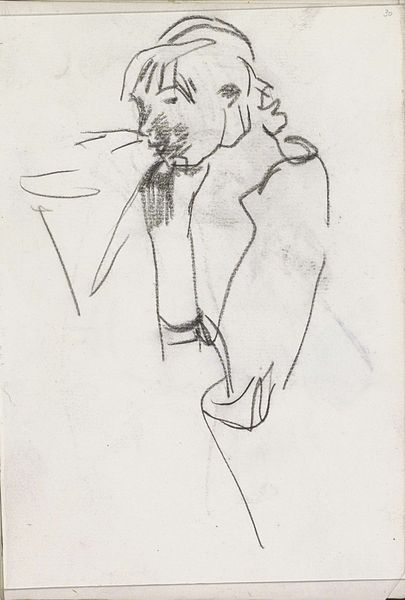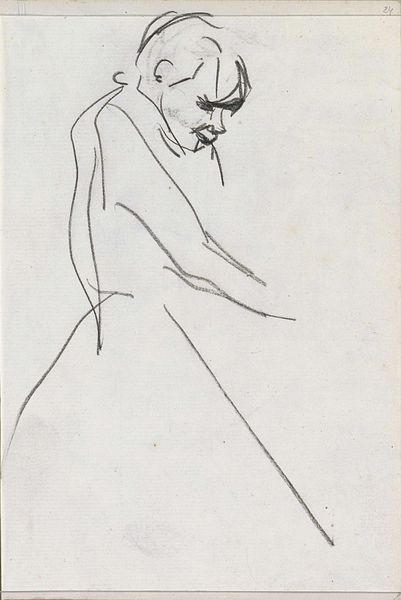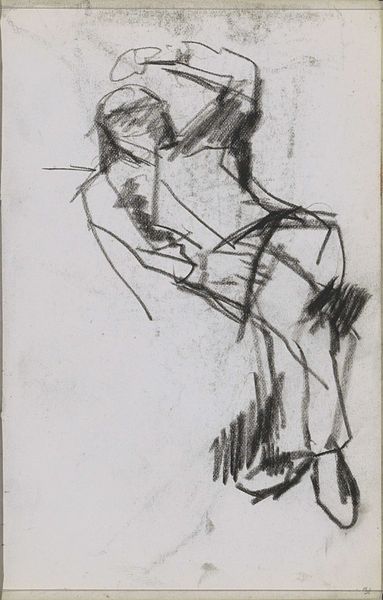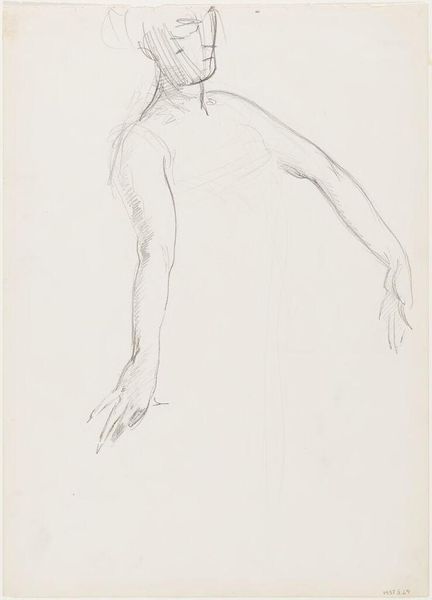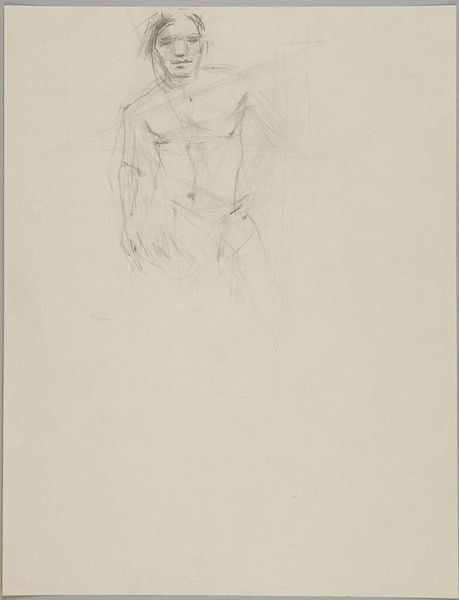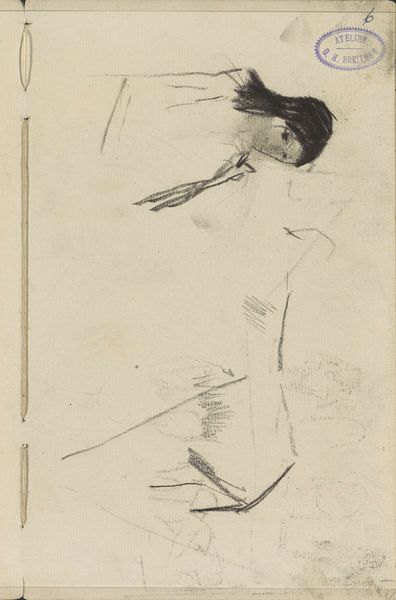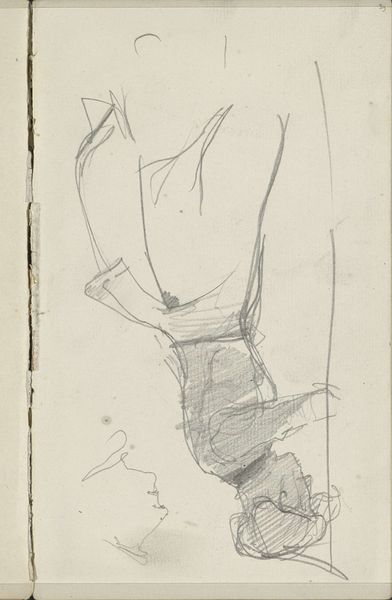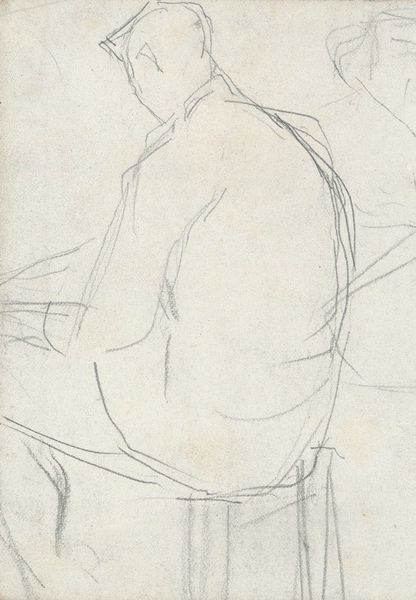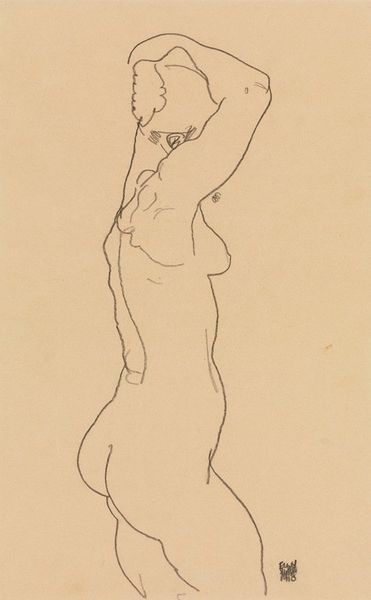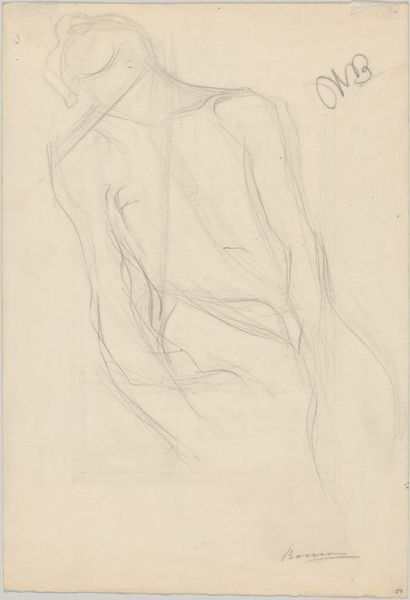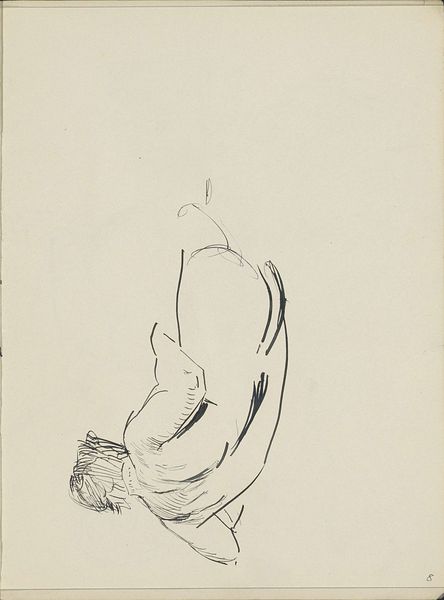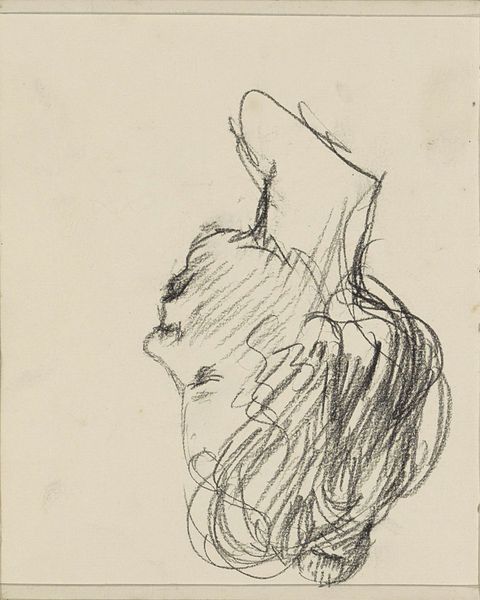
Copyright: Rijks Museum: Open Domain
Curator: Isaac Israels created this evocative pencil sketch titled “Hoofd van een jonge vrouw, in profiel,” sometime between 1875 and 1934. Editor: Immediately, I notice its unfinished quality. The lightness of the lines almost makes the figure disappear into the page itself, a stark and somewhat melancholy effect. Curator: Precisely. The economy of line is striking. Observe how Israels uses hatching and cross-hatching to delineate the planes of the face and suggest the fall of light. Note the simplification of form; it flirts with abstraction even while maintaining a strong sense of likeness. Editor: But consider the labor implied in this seemingly effortless sketch. What sort of paper was available to him, what quality of graphite? The swift, sure strokes speak to a mastery of his materials, built no doubt on years of repetitive practice – an almost anonymous type of physical investment rarely considered in portrayals of "genius." Curator: That is interesting, yes, but it is more about how this seemingly unfinished work speaks volumes. The contour line around the nose, the ear... such simple graphic signifiers imbue this profile with undeniable presence. We fill in the blanks, projecting our own ideas of beauty and youth. It engages the viewer’s eye, demanding active participation in constructing meaning. Editor: The 'unfinished' quality might also point to specific working conditions. How long was the young woman available to sit, what were the studio's constraints of time and resource that forced such brisk execution? Was this an elite artistic study or perhaps a quick sketch done amidst more demanding work for commercial application? Curator: Though that's entirely plausible, I am drawn more to consider the symbolic. This isn't merely a rendering of a young woman; it’s a study of form, line, and light that elevates the everyday. Editor: And also embedded social meanings, I'd say. Assembled paper, mined graphite, exploited time... these elements reveal unseen dynamics around Israels' aesthetic achievements in Impressionist circles. It also reveals hidden material and cultural assumptions embedded within high art's valorized surfaces. Curator: I concede that these sociopolitical aspects provide a fuller understanding, even while maintaining that the artwork also speaks eloquently through the language of form itself. Editor: Right, acknowledging art’s status as material outcome lets us consider Israels not merely as a detached "genius" but also one laborer situated inside of a specific network tied directly to processes. I find its suggestive brevity oddly profound. Curator: It's fascinating how our approaches highlight such different but intersecting perspectives on this one evocative drawing.
Comments
No comments
Be the first to comment and join the conversation on the ultimate creative platform.
